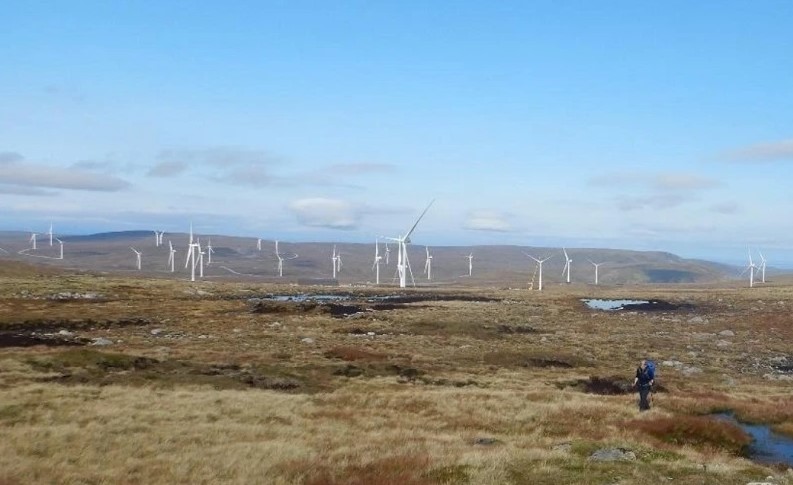
Map showing the extent of roads, habitation , plantation in Torridon 1921.

Map showing the extent of roads, habitation , plantation in Torridon 2018
The wild Scottish mountains are important to hillwalkers, so the SMT wants to ensure they are valued and protected. While Scotland has large areas of wild mountains (42 official Wild Land Areas, two large national parks, plus many scenic and conservation areas) a report released early in 2022 reveals that this “wildness” is in long-term decline, and the rate of loss is growing.
The research was commissioned by the charity Scottish Wild Land Group (SWLG) as they thought that hard information on the scale and nature of wild-land changes was essential. So it set up a six-month research project to measure and map what has been happening, with the SMT contributing £5000 of the overall cost of about £15,000, and funding also coming from the Cairngorms Campaign. The Grant is part of the SMT’s help for scientific and educational research projects.
The research team looked at trends across all 42 of Scotland’s official Wild Land Areas (WLAs), particularly to do with hill tracks, wind turbines, dams and commercial plantations, and how planning authorities dealt with them. A more detailed study was made of four Highland WLAs: in NW Sutherland; the Creag Meagaidh area; the Glen Affric area; and the Monadhliath. SWLG’s Dr James Fenton oversaw the project, which was carried out by the Wild Land Research Institute at Leeds University and Ian Kelly Planning Consultants.
Its 140-page report The State of Wild Land in the Scottish Highlands came out in February 2022 – and is available here https://www.swlg.org.uk/news.php.
The report’s findings are troubling, if not perhaps unexpected. In recent years the loss of wild land has increased in line with developments in energy generation (hydro, windfarms); expanding plantations; and hilltrack construction.
The loss of visual wildness is particularly down to wind farms, whose turbines can be seen from many miles away and which have been allowed almost to surround some of the wild land areas, and to reach right up to a national park boundary. Hilltracks, whether for energy schemes or estate purposes, make remote country much more reachable and add to the loss of wildness.
In the national and local-authority planning systems, the report found “completely random decision-making”, with “no positive council-led land use planning” for windfarms, which typically start off as “random, speculative proposals that are followed by often inconsistent decision making”. It says this is in stark contrast to what would happen for any other major land-use development in Scotland.
Dr Fenton commented on the “mismatch between the commonly stated view that the Highlands are renowned for their scenery and the practical measures in place for its protection…If we really do care for our scenery, we must ensure that there is strong protection for it in the planning system, including the Wild Land Areas. Otherwise attrition of this fantastic asset will continue apace.”
He added, writing for UKHillwalking (https://www.ukhillwalking.com/articles/opinions/scotlands_wild_land_is_under_threat-14364), that Scotland needs “to retain some wild landscape where nature can still be experienced in the raw, where nature is still in charge and the visible hand of mankind is minimal.”
The report underpins SWLG’s response, in March 2022, to a major planning consultation in Scotland, known as Scotland 2045 – fourth National Planning Framework. Among other points, the reponse says WLAs should get proper legal underpinning, absent at present, and not be watered down or abandoned.
A link to the response is on the SWLG homepage here.









